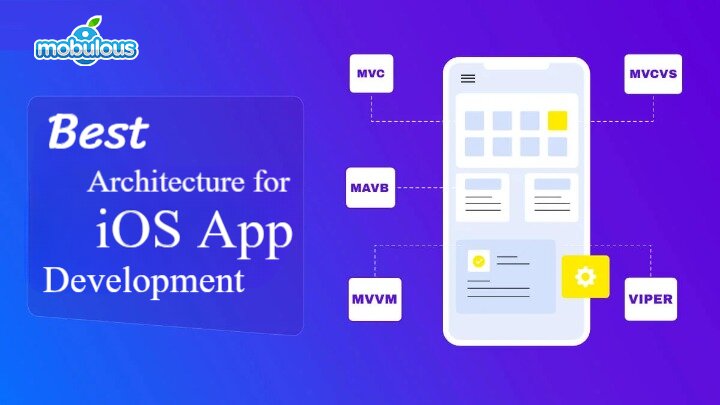
Overview
iOS app development is a dynamic field, constantly evolving with new technologies and methodologies. Selecting the right architecture is crucial for the success of an app, influencing its maintainability, scalability, and performance. This post will guide you through the best architecture for iOS app development, focusing on popular patterns such as MVC (Model-View-Controller), MVP (Model-View-Presenter), MVVM (Model-View-ViewModel), and VIPER (View-Interactor-Presenter-Entity-Router).
MVC (Model-View-Controller)
Overview
MVC is the most traditional and widely used architectural pattern in iOS development. It divides the application into three main components: Model, View, and Controller.
- Model: Represents the data and the business logic.
- View: Handles the display and user interface.
- Controller: Acts as an intermediary between the Model and View, handling the flow of data and user input.
Main Benefits
- Simplicity: Easy to understand and implement, making it ideal for beginners.
- Separation of Concerns: Clearly separates the user interface from the business logic.
- Widely Supported: Extensive documentation and community support.
Drawbacks
- Controller Bloat: The controller can become overloaded with logic, making it hard to maintain.
- Tight Coupling: Strong dependencies between components can reduce flexibility.
MVP (Model-View-Presenter)
Overview
MVP is a derivation of MVC that aims to address some of its limitations. In MVP, the presenter takes on the role of the controller but has a more defined responsibility.
- Model: Manages the data and business logic.
- View: Displays the data and forwards user interactions to the presenter.
- Presenter: Retrieves data from the model and updates the view accordingly.
Main Benefits
- Testability: The presenter is easy to test as it is not tightly coupled with the view.
- Single Responsibility Principle: Each component has a distinct responsibility, making the codebase more manageable.
Drawbacks
- Increased Complexity: More components can lead to a steeper learning curve for beginners.
- Boilerplate Code: Requires more setup and boilerplate compared to MVC.
MVVM (Model-View-ViewModel)
Overview
MVVM is an architectural pattern that is gaining popularity in iOS development, especially with the rise of reactive programming.
- Model: Represents the data and business logic.
- View: Displays the data.
- ViewModel: Acts as an intermediary between the model and the view, handling the presentation logic and user inputs.
Main Benefits
- Two-Way Data Binding: Changes in the view model automatically update the view and vice versa, reducing boilerplate code.
- Testability: The view model is highly testable since it does not depend on the view.
- Reusability: ViewModels can be reused across different views, enhancing modularity.
Drawbacks
- Complexity: Implementing data binding and reactive programming can be challenging for beginners.
- Performance Overhead: Data binding can introduce performance overhead if not managed properly.
VIPER (View-Interactor-Presenter-Entity-Router)
Overview
VIPER is a more advanced architectural pattern designed to enforce strict separation of concerns and improve modularity.
- View: Manages the display and user interface.
- Interactor: Contains the business logic.
- Presenter: Coordinates between the view and the interactor.
- Entity: Represents the data.
- Router: Handles navigation and routing.
Main Benefits
- Modularity: Highly modular, making it easy to manage and scale large projects.
- Testability: Each component is independently testable, enhancing the overall test coverage.
- Separation of Concerns: Ensures a clear separation of responsibilities, improving code maintainability.
Drawbacks
- Complexity: Steeper learning curve and more components to manage, which can be overwhelming for beginners.
- Overhead: May introduce overhead in smaller projects due to its complexity.
Conclusion
Choosing the right architecture for your iOS app depends on various factors, including the project’s complexity, team size, and specific requirements. For beginners, MVC is an excellent starting point due to its simplicity and ease of use. As you gain more experience, exploring MVP, MVVM, and VIPER can provide better scalability, testability, and maintainability for larger and more complex projects.
Understanding the strengths and weaknesses of each architecture allows you to make an informed decision, ensuring your app is well-structured and efficient. Remember, there is no one-size-fits-all solution, and the best architecture for your project is one that aligns with your goals and resources.